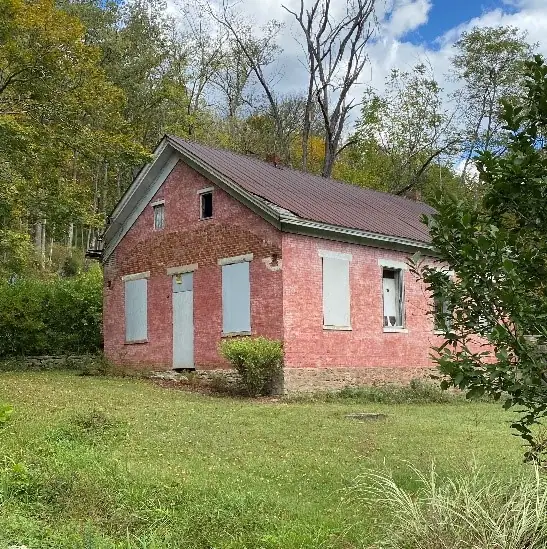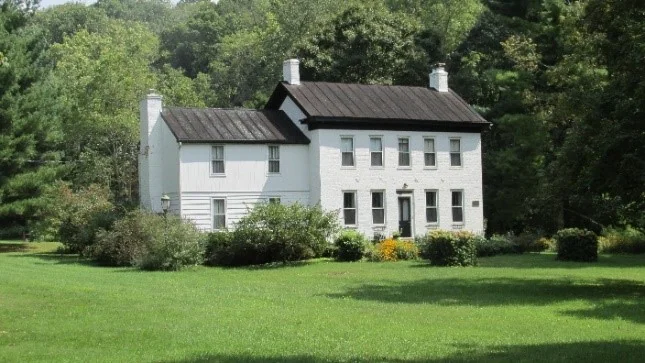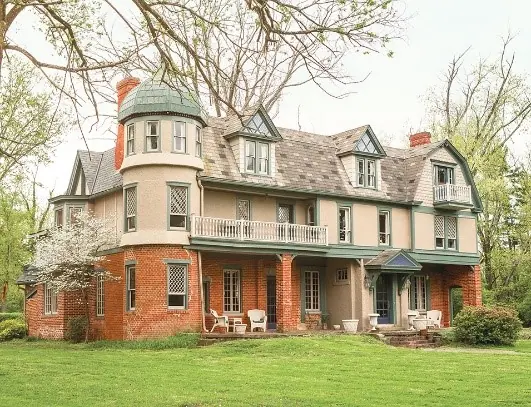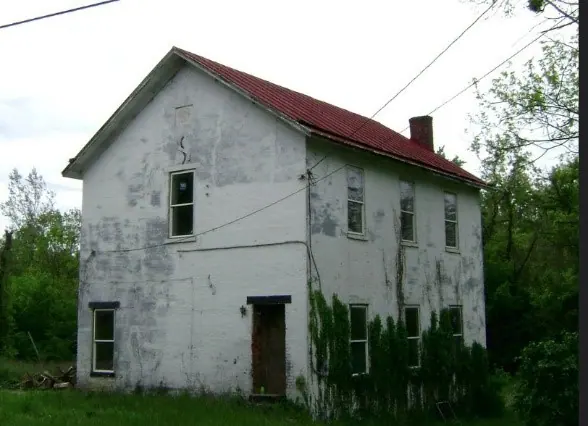Early Settlements
Because Pierce Township was part of Ohio Township until 1853, its early pioneer history and settlements were in that context. Its principle streams were Ten-Mile Creek to the east and Nine-Mile creek to the west. Ten-Mile Creek in particular serviced the operation of a number of mills[i].
The majority of the material on the subject of early settlements in Pierce Township comes from an excellent source of genealogical data published in 1880, “History of Clermont County, Ohio”, by J.L. Rocky and R.J. Bancroft. (download excerpt for the book here). View the complete book online here.
Spann
An early Pierce Township settlement, located at Ten Mile road and Dutch Creek (SR 749), Spann encompassed a general store/post office (1860), a community well, and the 10 Mile Presbyterian Church (1912-1943). The general store still stands today at the corner of SR 749 and Cole Road. A half mile north of the general store, at Merwin 10 Mile and Cole Rd, is Pierce Township School #4. It still stands today although in a state of disrepair. In 2003, a historical marker was placed here by the Clermont County Bicentennial Commission.
Pleasant Valley
Also known as Nineveh, Pleasant Valley was on Nine-Mile Creek (today what is Nine-Mile Tobasco Rd, just south of Bradbury Rd.). The hamlet was built on 15-20 lots sold off by George Floro sometime after 1835. William Gaskins and Dan Redmond were blacksmiths and wagon builders and John Behymer had a cooperage. From 1844 to 1868, John Gaskins ran a store. Pleasant Valley had a half dozen houses and a United Brethren Church. The members of the United Brethren Church originally held meetings in a log house on the hill above Pleasant Valley, and then at the brick school house where the church was formerly formed in 1877 by the Rev. S.F. Kuhns with about 30 persons in the fellowship. Around this time, construction on the church building itself was begun and consecrated in November 1878 with about 100 members.
Two schoolhouses existed near Pleasant Valley, Lower Nine Mile School House (Near Nordyke) and Upper Nine Mile School House (north of Bradbury Rd.). Both still exist today and have been converted into residences.
In 1827, John Gaskins purchased 57 acres at the corner of what is now Nine Mile Tobasco Road and Bradbury Road, where he built a one room home which was expanded to include 4 more rooms in 1847. A sawmill and general store were also built on the property. The Cincinnati and Eastern Railway trestle collapse occurred in front of this property in 1865 (see https://piercetownship.org/history/great-bradbury-road-trainwreck-of-1885/), and the injured and dying were cared for on the home’s stone porch. In 1955, the Malany family purchased the property, making it their home and placing it on the National Register of Historic Places in 1975.
Pleasant Hill
Known today as Locust Corner, Pleasant Hill was in the “uplands” of Pierce Township, near its center, and laid out from the Benjamin Ricker farm. Benjamin Ricker had the first store here around 1830. The hamlet also had a public hall, a school building, 8-10 residences and a Methodist Church. The post office existed from 1848 and was supplied with daily mail from the New Palestine post office.
In 1828, Samuel Ricker built a large home, which still stands today, just west of where the Locust Corner Church sits today. The home was of brick and stucco, and included a three story, onion domed turret. In the 1920’s, Everett Townsley bought the from Ricker’s descendants. To this day, it is known as the Townsley House.
The first meetings of the Pleasant Hill Methodist Episcopal Church were held in the house of Samuel Ricker, until about 1830 when a small brick meeting house was erected just west of what is now the Locust Corner Community Church. In 1839, the church trustees began to plan for expansion and purchased 0.36 acres of land, at a cost of one dollar, where a church still stands today. In the 1960’s, the church was expanded to add two rooms (a pastor’s office and a combined library and coffee area, as well as an entryway).
In 1835, Michael Behymer and his wife Mary Ann (Archer) started their farm of one hundred eighty-seven acres near Pleasant Hill, which was known as “one of the best neighborhoods of Clermont County”.
In 1931, a new Pierce Township school was built on Behymer Road. In the 1960’s, it was absorbed into the New Richmond Exempted School District.
In 1998, a new Locust Corner Elementary School building was built behind this school building, and the old building was torn down.
Palestine
In 1818, just over a mile east of the mouth of Nine-Mile Creek, Zachariah Chapman, and Christian Ebersole laid out 52 lots and two streets (Front and Main), parallel to the Ohio River and five intersecting cross streets. The first frame house was constructed in 1820 and was where John Behymer had the first store in Palestine. In 1848, Thomas Oxley added 102 lots, with a large area reserved for a public market near Ten-Mile Creek. Also, in 1848, Christian Stiffle added 137 lots, with a street named New Richmond. Despite the grandiose plans for Palestine, it never grew to the greatness of the vision of its planners. What is left of Palestine today is accessible at the intersection of SR 749 and US 52.
In 1849, Joseph Bud started manufacturing bricks in Palestine, using steam power to grind the clay. Saw and grist mills were added later, using barges to send products downriver to Cincinnati. The property was destroyed by fire in 1864, which ended most manufacturing in Palestine.
By the late 1870s, Jacob Fetzer had a store on the turnpike near Palestine, where he had been the postmaster of the New Palestine post office since 1869. Near Fetzer’s store was a blacksmith. Palestine proper had a cooperage and a manufacturer of sieves. There was a river landing at Palestine for river steamers, as well as a station for the Cincinnati and Eastern Railroad. (more information about the railroad).
Blairsville
About a mile above Palestine, on the location which would later become the Beckjord Power Plant, was the settlement known as Blairsville. In 1874, John Blair purchased thirty acres of land. This area was known for its superior quality clay soil which extended to a depth of twenty-five feet. From this clay, John Blair made brick which had a very good reputation among builders. Powered by steam, the facility employed sixty men and was capable of molding and firing 35,000 bricks per day, most of which was sent to Cincinnati on barges.
Blairsville had a landing on the Ohio River, a station on the Cincinnati ad Eastern Railroad, and a number of houses and shops.
[1] “History of Clermont County, Ohio”, J.L. Rocky and R.J. Bancroft, 1880. Can be accessed at https://babel.hathitrust.org/cgi/pt?id=yale.39002054234126&view=1up&seq=537



















